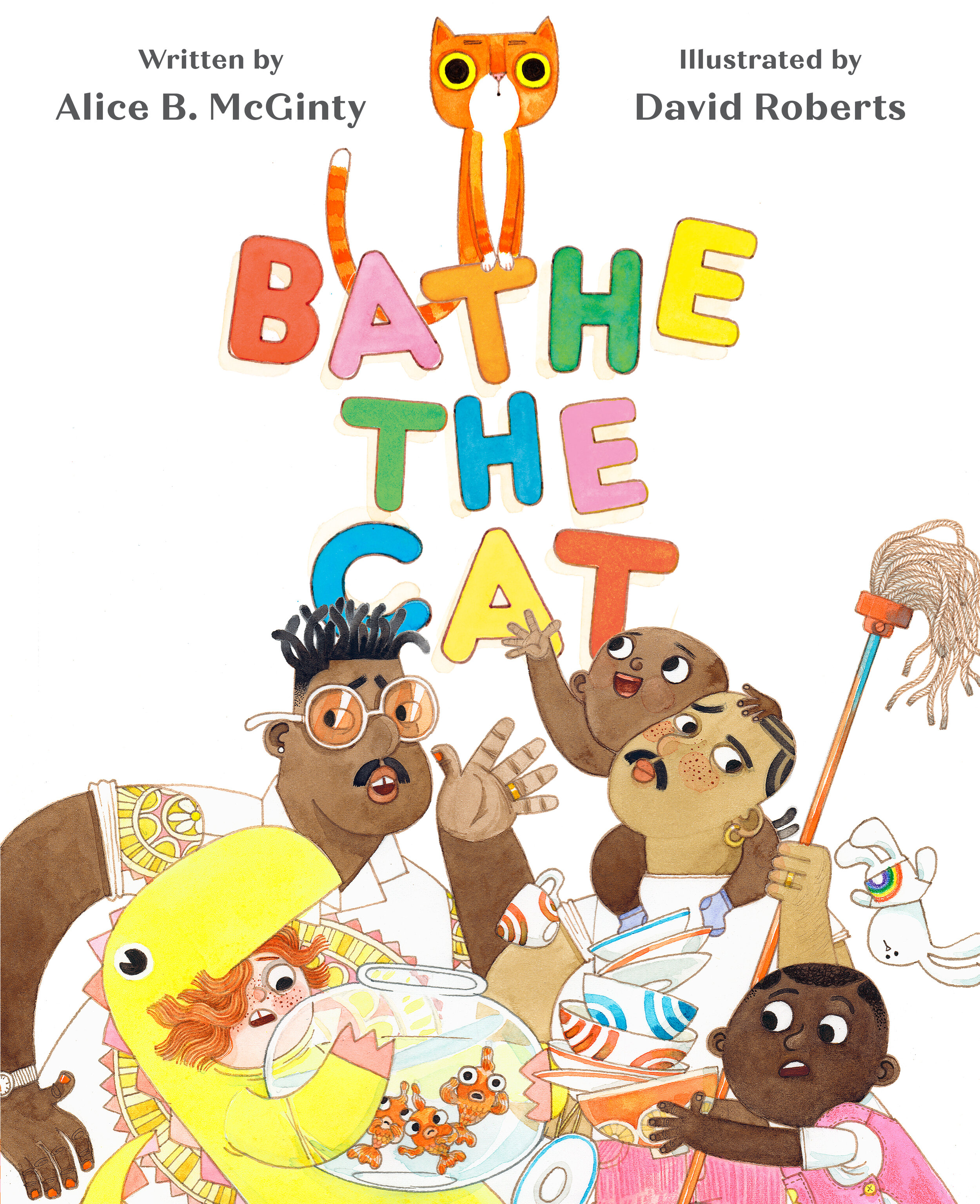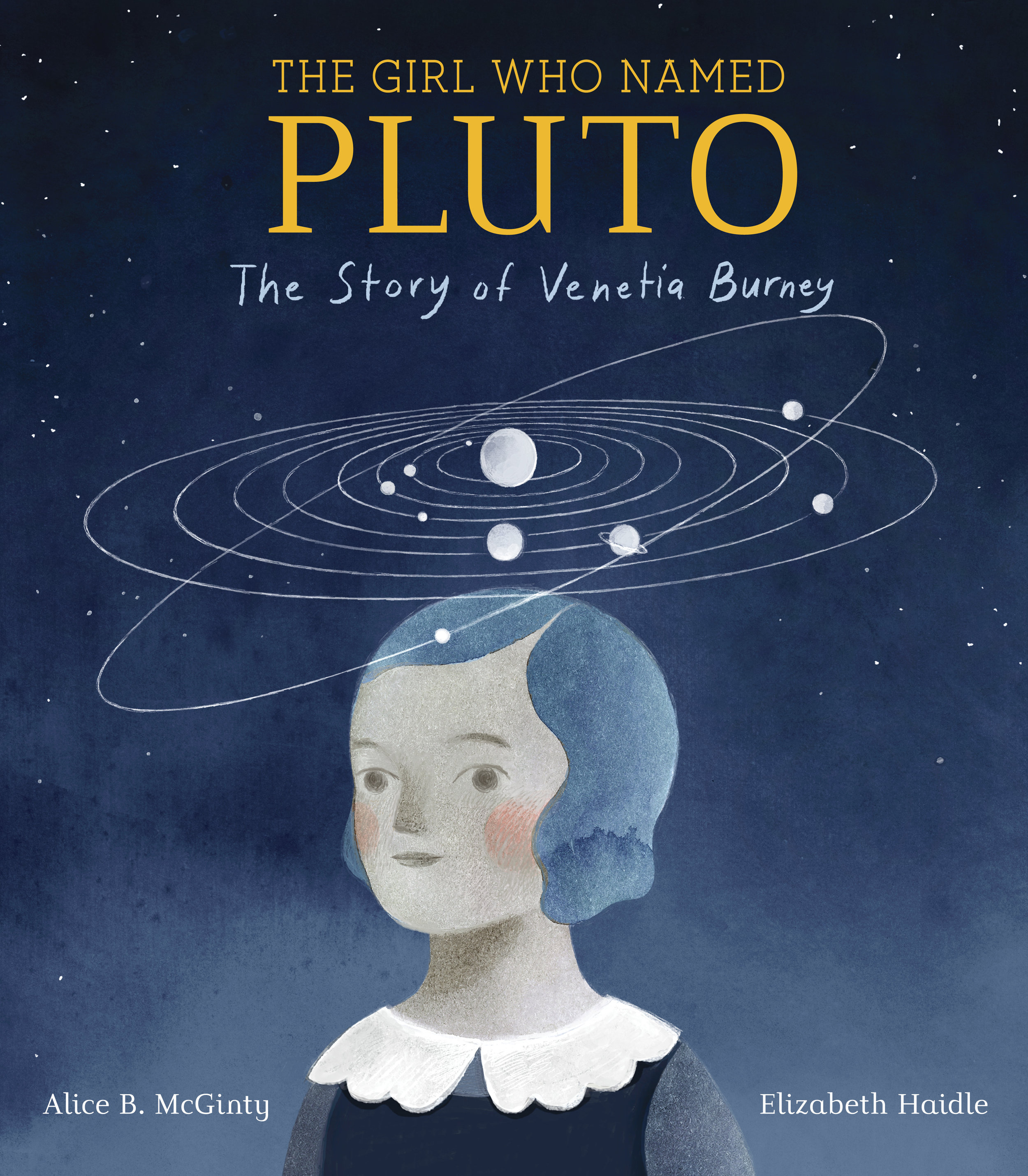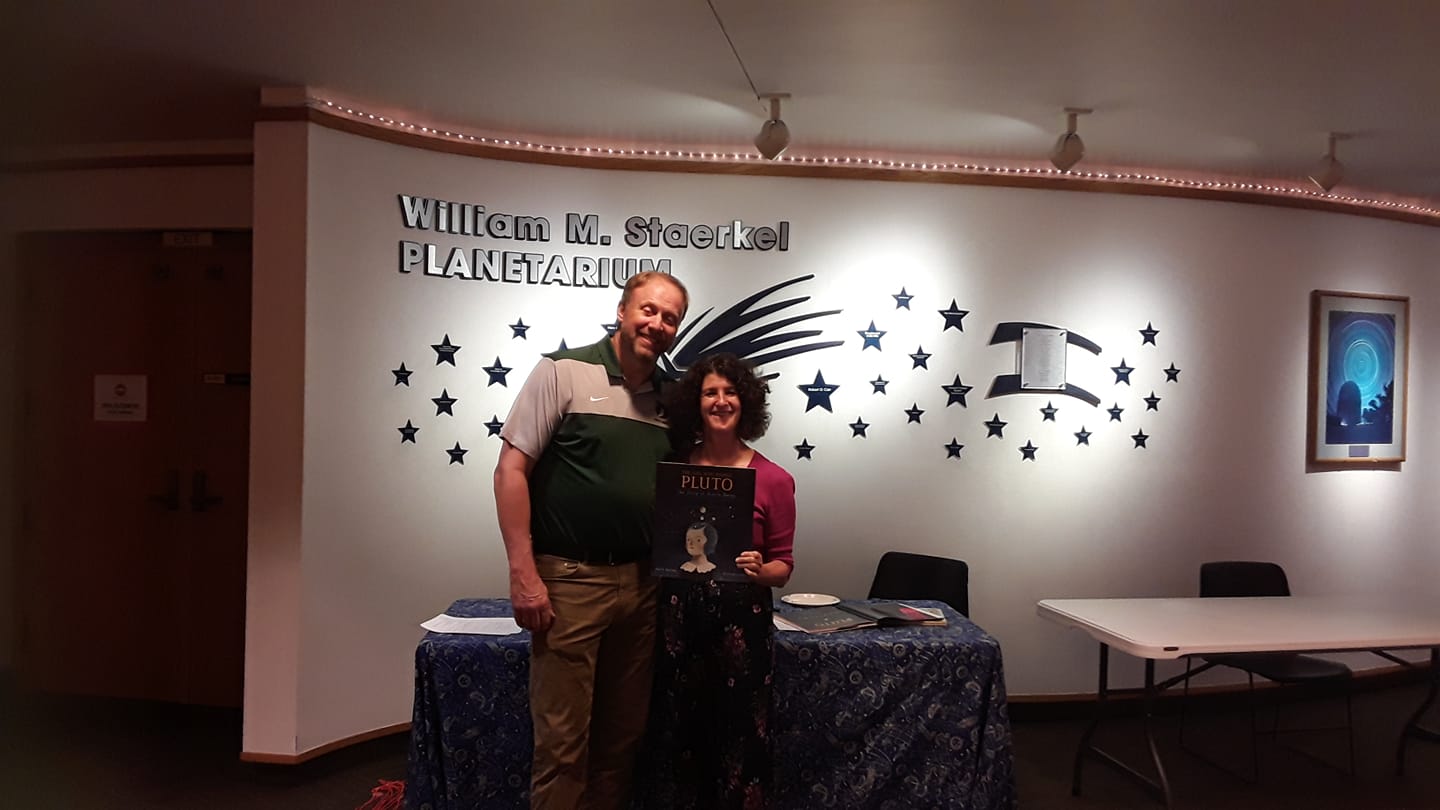Synagogue Just Like Home
Kirkus - June 1, 2022
A shul’s congregants renew their temple.
Rabbi Ruben loves his synagogue, a place he believes should feel like “a happy home.” When he discovers a kitchen sink leaks, library floorboards creak, and sanctuary windows permit drafts, he springs into repairman mode, wanting to put things to rights as a Shabbatgift for his flock. With trusty toolbox and dog in tow, the rabbi attempts repairs and comes up with some ingenious ideas—e.g., stuffing challah dough into the faucet to stanch the leak. At first, Rabbi Ruben’s efforts seem to pay off, Friday night services proceed, and the rabbi is rightly proud, but then, alas, his skills as a spiritual leader prove to outshine those of a general contractor. After services, numerous congregation members—particularly women and kids—pool their know-how and pitch in to do the repairs correctly, confirming Rabbi Ruben’s theory that a synagogue, like a home, is for helping, sharing, and caring (crucial when a watery near disaster occurs). Happily, the following Friday night’s services take place without problems—or more fix-its. This warm, humorous tale is ably supported by lively mixed-media, digitally finished illustrations that affirm the story’s guiding principles of collaboration and cozy hominess. Rabbi Ruben is light-skinned; congregants are diverse in terms of skin tone and age. Jewish audiences will appreciate familiar details in text and art, but the important message about the spirit of togetherness is universal.
A delightful testament to the power of community. (glossary) (Picture book. 5-8)
Publisher's Weekly - June 3, 2022
Rabbi Ruben’s beloved synagogue is warm, welcoming—and in serious need of renovation. “Its sunny sanctuary had such drafts that at last Friday evening’s service, the Shabbat candles flickered once, flickered twice, and then blew out!” writes McGinty (The Water Lady) in warm prose. The rabbi, who reads as white, decides he’s the “Y” in DIY and waves off all help, but his repairs—he uses challah dough to plug a leaky faucet—fall far short. With the synagogue even more of a mess than before, the congregants gently remind their rabbi that if a synagogue is indeed “just like home,” then it’s their home, too, and that “helping,” “sharing,” and “caring” is everyone’s responsibility. After a week of their working together, the synagogue is as good as new, and the Shabbat candles burn “bright and strong.” Molk’s (There Might Be Lobsters) mixed-media art portrays an exuberantly participatory community of people with varying body types and skin tones, and kids who evince as much a sense of ownership as the grown-ups. Final scenes set in the glow of the Shabbat candles have a quiet, profound beauty: deep faith, immense joy, and unshakable belonging radiate from the pages. Ages 4–8.
School Library Journal
PreS-Gr 2–McGinty (Bathe the Cat) tells the story of Rabbi Ruben and his valiant efforts to maintain his not-so-new synagogue. With a leaky sink, squeaky library floors, and drafty windows, Rabbi Ruben has a challenge on his hands. On Friday, before the start of Shabbat, Rabbi Ruben decides to fix everything as a gift to his congregation. But a handyman Rabbi is not. He uses tablecloths to fix the drafty windows, a hammer to pound the floor into sitting straighter, and employs a piece of raw challah to fix the leaky sink. After the service that evening, the congregation can’t help but notice the tablecloth-sealed windows or the fountain spray of water when the challah gives way. Following their Sabbath rest, the congregation comes together to use their various areas of expertise, and everyone pitches in to refurbish and polish their synagogue. Molk’s illustrations capture Jewish traditions in vibrant watercolor style through mixed media and are finished digitally. The artwork brings to life the water, light from the candles, and humor in the repairs. A glossary of terms, pronunciation, and definitions is included. VERDICT Art and story are infused with elements of Jewish tradition in a way that is accessible to all readers and listeners, regardless of faith. Highly recommended for purchase.–Sarah Sieg
Foreword
Giggle and groan as Rabbi Ruben works to repair his aging synagogue in creative, if not wholly effective, ways—patching leaks with challah dough and creaking loudly through a library while a woman studies the Torah, for example. This lighthearted tale with dazzling, diverse illustrations winks to its audience (“I’ll be quiet as a deli on Yom Kippur”) as it delivers a quiet message about the value of working together to make our shared spaces bright.
Bathe the Cat
A family of five has a lot to do before Grandma’s visit; luckily, the father narrating McGinty’s (The Water Lady, rev. 3/21) energetically rhyming story is good at delegating: “Bobby, mop the floor. / Dad will scrub the dishes. / I’ll vacuum the rug. / Sarah, feed the fishes.” In case anyone needs a reminder, a job list is on the refrigerator, spelled out with colorful magnetic letters. The list is helpful...and it’s also how things go off the rails. An orange cat sneakily rearranges the words on the fridge, hoping to escape the dreaded “I’ll bathe the cat.” When the family gets to work, they’re confused but compliant: “I’ll vacuum the lawn. / Bobby, bathe the mat. / Sarah, mop the baby, / and Dad will mow the cat.” Whoa! Definitely not what the cat intended. Cleanly rendered illustrations show the family dutifully following orders while things go hilariously wrong. Roberts’s (Ada Twist, Scientist) precise pencil and watercolor illustrations go beyond the entertaining premise to matter-of-factly portray a family at the intersection of a number of identities. The two fathers have brown skin, as do two of their kids. Sarah, who wears a T-rex costume, is white with red hair and freckles. Dad, who also has freckles, wears pink pants, as does Bobby. This diversity isn’t the point of the story but offers much to contemplate after the silliness is done—and the cat still isn’t bathed. KITTY FLYNN
Booklist - November 2021
Grandma’s coming to visit, and the family—two dads and their kids—must quickly tidy up. Getting started, one dad assigns who’ll be doing what, listing everything on the refrigerator in colorful letter magnets—“Bobby, mop the floor. / Dad will scrub the dishes. / I’ll vacuum the rug. / Sarah, feed the fishes”—plus, there’s giving kitty a bath. Hearing the latter, the none-too-thrilled cat takes action, rearranging the refrigerator words, and then the task-organizer jumbles his instructions, too (“I’ll vacuum the lawn. / Bobby, bathe the mat. / Sarah, mop the baby, / and Dad will mow the cat”). But kitty’s not keen on that either! The cat scrambles the words again (and again), with the confusion escalating with each mischievous revision. Finally, everything’s sorted and neat when Grandma arrives, and while kitty never receives a bath, perhaps that was the plan all along. Lively, expressive watercolor-and-pencil illustrations of the multiracial family and animated scenarios are the perfect accompaniment for the peppy rhyming text, humorously depicting the household-chores chaos (and kitty’s contributions) in this inviting, quite entertaining read-aloud friendly title.
— Shelle Rosenfeld
Review, School Library Journal - November 2021
PreS-K–A sly cat helms this comedy of errors featuring a diverse family with two fathers who both have brown skin and black hair. Expecting Grandma Marge at two o’clock, the parents and their kids follow a list of chores that must be done in order to get the house in top form. One father outlines the chore list with alphabetic refrigerator magnets. When the family cat catches wind that his bath is on the list, he rearranges the chores to read, “feed the floor ... sweep the dishes.” Tomfoolery ensues as the family sets out on their jumbled tasks, and the cat—unable to read the words he is rearranging—finds this mix-up did not work out in his favor, as he hears the final task of “mow the cat.” The cat moves the letters yet again and the chores get ever sillier, ending with—much to the feline’s dismay—“vacuum the cat.” The family has almost run out of time to clean before Grandma Marge’s arrival, so one father takes charge, ending the list with a much more kitty-friendly “rock the cat.” Told in rhyming verse, McGinty’s silly yarn has charm to spare. Young readers will be tickled by the cat’s mischievous misdirects and the resulting pandemonium. Roberts’s pen and watercolor illustrations carry on the aesthetic tradition of Pat Hutchins and Judi Barrett, paying homage to the colors and fashions of the 70s. Each page is filled with well-conceived details that deserve close inspection.VERDICT Preschoolers will be in stitches reading this modern revelry told through a vintage lens. A recommended purchase for most collections.–Sarah Simpson, Westerville P.L., OH
The Water Lady
Book Trailer: Photos and video of The Water Lady delivering water:
2021 Interview, Darlene Arviso and Thurmond Jones - The Water Situation Now:
Starred Review, Kirkus - February 9th, 2021
An elegant reminder that water is central to life.
Set on the sprawling Diné reservation, this beautifully illustrated picture book will educate young readers about the beauty and rigors of life on the high-desert plateau. Young Cody wakes up thirsty, but the cup near his bed is empty, as is the water bucket his mother relies on in the kitchen. His older siblings head off to catch the school bus, and Cody runs to check on the water barrels outside. It’s a scorching hot day. The land is dry. The horses, chickens, and dogs are thirsty, too. But Cody’s family, like many families on his reservation, do not have running water, and they must wait for the water lady, Darlene, to replenish their stores. Begay’s watercolors capture the mauve and pink hues of the juniper and piñon arroyos, bespeaking his #ownvoices knowledge of Navajo Nation. The velvet dresses, turquoise jewelry, and artwork on walls reveal a sovereign people with ancient ties to the land. With lyrical language and friendly faces emerging on each page, it is the image of the water lady, moving from her job driving a yellow school bus to her job driving a yellow water truck, that will stick in the minds of readers, revealing the conservationists’ spirit that still pervades in a simple Diné lifestyle. An author’s note addresses the fight for wells and more readily available water; it’s followed by a note from Darlene Arviso herself. A list of sources and a well-placed glossary seal the deal. (This book was reviewed digitally with 11-by-17-inch double-page spreads viewed at 39.3% of actual size.)
Publisher's Weekly Review - February 18th, 2021
Through the story of a fictional Diné boy named Cody, McGinty introduces Darlene Arviso, known as the Water Lady, who delivers water to Navajo Nation families that do not have running water (40%, per an author’s note). Waking to discover that his mother has used the last of the family’s water supply, Cody worries about their farm animals and himself: “the sun will blaze from the sky, another scorching day in the high desert. And he is thirsty.” As Cody’s grandmother relays to him the story of the Water Sprinkler, “the Navajo God of Water who collects water in a jar and sprinkles it” in all directions, Arviso finishes her job driving a school bus, then visits a water tower to fill a tanker truck with 3,000 gallons before steering to Cody’s home, and to others’. Navajo artist Begay’s vibrant ink and watercolor art brings a stirring emotional undercurrent to this community-oriented narrative. An author’s note discusses the story’s origins in a ride McGinty took with Arviso, who contributes a note of her own. Ages 4–8. (Mar.)
School Library Journal Starred Review
Gr 1-4–Cody, a Navajo boy, wakes up thirsty, and there is no water in the kitchen, where his mother has just made oatmeal, or in any of the big blue containers outside his home. There is no water for him, or the horses, or the chickens. A few miles down the road, Darlene Arviso’s trailer does have running water, but other Navajo people do not. “Many families on the reservation do not—no gushing showers, no flushing toilets, no flowing sinks.” Darlene fills the tank of her large yellow truck with 3,000 gallons of water to deliver to 10 families that day, and one of them is Cody’s. She repeats this every day just as her ancestors helped their neighbors. There is no child listening who will not feel just as thirsty as Cody and be just as relieved when Darlene’s truck rolls into sight. McGinty’s storytelling, peppered with Navajo phrases and cultural cues, provides a balanced view of this life and through Cody’s perspective, just enough suspense. An author’s note rounds out the discussion and explains Darlene’s role not only as the Water Lady, but as bearer of news, social connections, and other threads of community life. Begay’s watercolors show a parched landscape full of desert beauty, but also the concern on thirsty Cody’s face, and his mother’s knowing smile that all will be right. VERDICT With more resources at the back, this is a must-have for every collection and a sure path to children wanting to know more about water management in theNavajo Nation and elsewhere.–Kimberly Olson Fakih, School Library Journal
*This is the second starred review for this title.
A Story For Small Bear
Starred Review, Kirkus - September 1st, 2020
Preparing for winter hibernation instills a big lesson for Small Bear in this bedtime story.
When a late-fall wind chills the child after an afternoon nap, Mama says, “I smell frost in the air.…Tonight we’ll start our winter slumber.” But the day is packed; they must find sprigs of spruce to make a warm nest. There are juicy acorns to gather. And Small Bear needs to take a bath before their long sleep. Small Bear wants nothing more than to have enough time for a story before sleep, but Mama warns her: “If you help—no dilly, no dally—then we’ll have time for stories,” she says. Small Bear works hard to avoid temptations: snuggling in a cozy hole in a spruce tree, playing longer in the stream, and climbing higher in the tree. But Mama’s instruction helps Small Bear to stay on track and remember “to save time for stories.” Of course, Small Bear’s resistance to the kind of procrastination that would sink many others is rewarded with Mama’s best story, and sleep comes quickly. McGinty’s rhythmic prose and absolute mastery of pace elevate a simple story to something poetically potent. Jones’ deeply textured illustrations make every spruce sprig and, especially, the bears’ fur stand out beautifully. A standout spread rotates the book 90 degrees for a tall tree climb; it’s a delight, just like everything else in this expertly executed picture book. (This book was reviewed digitally with 10.5-by-21-inch double-page spreads viewed at actual size.)
Hibernation has rarely felt so well earned and enchanting. (Picture book. 3-7)
Review, Horn Book Magazine - November / December 2020 issue
A chilly wind blows into the den where Small Bear and Mama live. It’s time to hibernate. Small Bear requests stories before slumber, but Mama tells her that there’s work to be done—with “no dilly, no dally.” Small Bear gathers spruce sprigs for a “soft, warm” sleep spot; takes a bath in the stream; and collects acorns. But, much like human children, and despite an admirable determination, Small Bear cannot resist tantalizing distractions. “The forest was full of food and adventure,” and Small Bear is eager to experience it all. McGinty tells the story with a pleasing rhythm and economy: “Sun was setting, wind was biting, winter knocking, and she had to save time for stories.” The repetition of particular phrases, including the satisfying “no dilly, no dally” refrain, will hook young listeners. The smudgy, soft-focus illustrations bring to life this forest in autumn, with walnut and copper hues dominating. And Jones depicts an endearing protagonist in curious Small Bear, who leaps through the forest, exploring in wonder. Readers turn the book for one dynamic vertically oriented spread, in which Small Bear climbs a tall tree. “Ahh! She could climb forever.” The snug ending, which makes this one a fitting bedtime book, reveals that Small Bear succeeded in leaving time for stories: as Mama and cub cuddle, snow falling, Mama recounts the events of Small Bear’s day. –Julie Danielson
Review, School Library Journal - October 2020
It’s late autumn, and it is time for Small Bear to settle down with her mama for the winter. Small Bear asks her mother if there will be time for stories before they must sleep, to which Mama replies that she would love that, as long as there is no dilly and no dally in their remaining preparations. Small Bear finds that there are so many fun activities and temptations to linger, but continues to remember Mama Bear’s caution not to dilly or dally. Finally, they return to their den as the sun is setting, snuggle together in their spruce-bough nest, and in a sly bit of metafiction, Mama Bear begins to tell a story about a small bear who likes play, but loves time for stories. In warm autumnal hues, full-page collage illustrations resembling torn tissue paper enhance the lyrical story and invoke a cozy atmosphere. The subtle message about self-regulation and working toward earned rewards is an additional bonus. VERDICT This is a lovely, feel-good addition to the hibernation-themed canon, to be savored during story times or one-on-one sharing at bedtime. –Jessica Marie, Salem P.L., OR
Publisher’s Weekly Review - October 2020
A mama bear and her cub prepare for hibernation in this gentle seasonal bedtime story by McGinty. When Mama Bear sniffs frost on the air, she says it’s time to start their winter slumber. “Will you tell me stories before we sleep?” requests Small Bear. “If you help—no dilly, no dally,” replies Mama in what becomes a refrain. As signs of winter persist (“wind was biting, winter knocking”), the pair gather pine sprigs, bathe in a stream, and tuck into a meal of berries and acorns, and Small Bear, doing her best not to dally, gets a final moment with favorite forest spots. When at last the duo snuggle into their cozy den, the tale that Mama Bear recounts brings the book to a satisfying full circle. Working with acrylic and watercolor, Jones layers illustrations for a richly textured effect. Smudgy landscapes create calming backdrops against which wildflower-filled forest scenes play out; together with McGinty’s expert prose and pacing, they elevate a predictable arc into something memorable. Ages 3–7.
The Small Bear Song
The Sea Knows
Booklist Review – April 15th, 2020
What does the sea know? Quite a bit, according to this well-crafted picture book. The rhythmic verse text begins with a series of opposites, such as “The sea knows huge. / The sea knows small. / The sea knows short. / The sea knows tall.” The text gradually moves away from contrasts and toward concepts with shared properties. Finally, a sequence of dynamic events builds up to a dramatic storm before resolving fittingly with “The sea knows when / the storms should cease. / The sea knows calm. / The sea knows peace.” Visually, the book begins with people standing on a pier and observing the ocean, shifts to a series of underwater scenes, and then draws back again to watch the storm arrive and recede. Full of movement, grace, and intriguing details, the digital artwork illustrates the text beautifully. An informative appended section elaborates on sea creatures and phenomena mentioned in the verse. The writing flows well, making this picture book a pleasure to read aloud and a natural for classroom units on the sea.
— Carolyn Phelan
The Sea Knows Read Aloud
The Sea Knows Teacher Video
The Girl Who Named Pluto
Junior Library Guild Selection
2020 Bank Street Best Children's Book of the Year
Starred Review, Kirkus - May 14th, 2019
It’s 1930, and an 11-year-old girl in Oxford, England, is about to make history.
McGinty first introduces readers to young Venetia Burney attentively listening to a school lesson about the solar system and quickly establishes Venetia’s voracious curiosity across disciplines. The elegant yet accessible text is packed with historical tidbits that contextualize her scientific contribution without overwhelming readers (for example, the fact that her well-connected grandfather had a friend in the Royal Astronomical Society who shared Venetia’s idea with the Lowell Observatory astronomers). Third-person present-tense narration draws readers into the exact moment when, upon hearing that a ninth planet has been discovered, Venetia suggests a name: “she knows that this planet, so far from the sun, must be frozen, dark, and lifeless…like…the underworld ruled in Roman myths by Neptune’s brother, Pluto.” Haidle’s layered, semiopaque washes of blue-gray ink with rusty red accents impart a gravitas that supports the significance of Venetia’s contribution and, echoing sepia-tone photos, emphasizes her place in history. The muted color palette somewhat obfuscates skin tones, but most people, including Venetia, appear white. The constellations on the endpapers immediately introduce the connection between mythology and astronomy that inspired Venetia, while stylized maps and diagrams of the solar system will enthrall readers of all ages.
An inspiring and beautifully illustrated tale made all the better by its historical foundation. (author’s note) (Picture book/biography. 4-8)
Link to Kirkus Review
Awards, Accolades, and Interviews for The Girl Who Named Pluto
Best Children’s Books of 2019; The year’s best aviation- and space-themed book for young readers, Air and Space Magazine - December 5th, 2019
10 Awesome books for young girls that encourage and celebrate STEM, NBC News - August 29th, 2019
Odd pairings of 2019 children’s books, School Library Journal - October 1, 2019
The Girl Who Named Pluto (Author Interview), Picture Book Builders - May 21, 2019
'The Girl Who Named Pluto' Stars in New Picture Book, Space.com - May 13, 2019
Pancakes to Parathas
Northern Lights Book Award, Food Category, Northern Dawn Awards - 2019
Sakura Medal 2021 Nominee
Q&A with Alice McGinty, Author of Globe-Trotting Picture Book ‘Pancakes to Parathas’, Little Bee Books - January 15, 2019
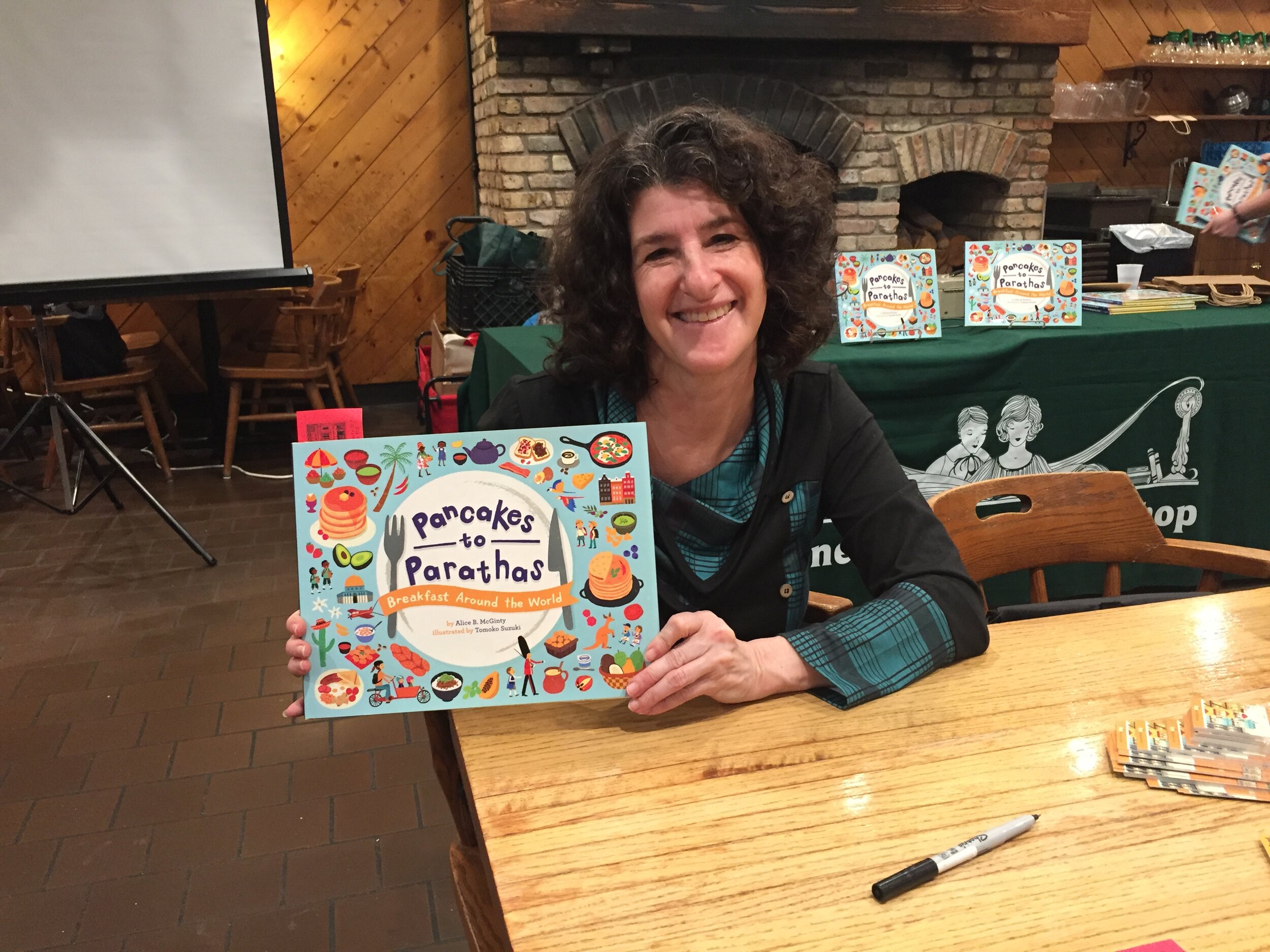
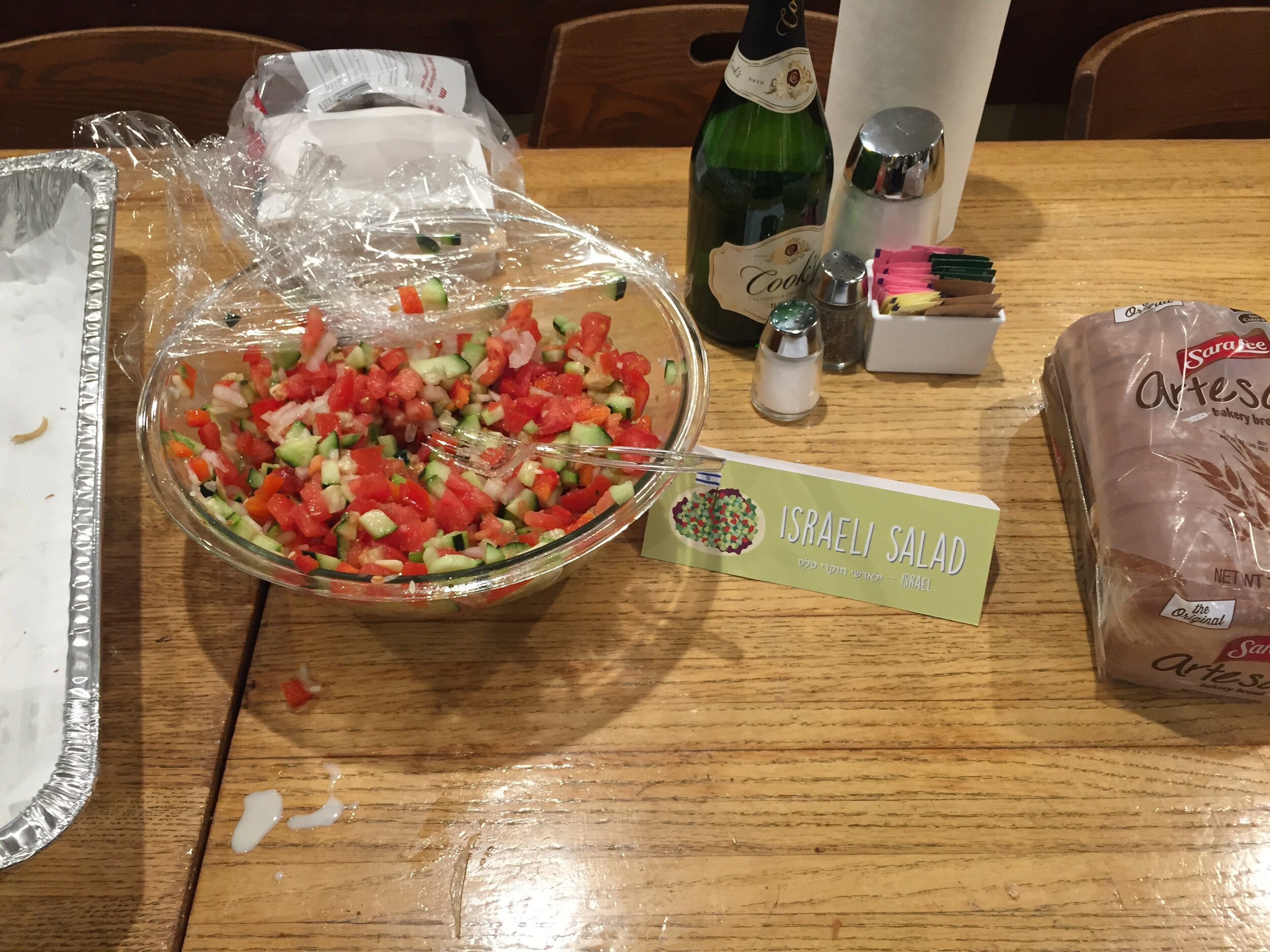
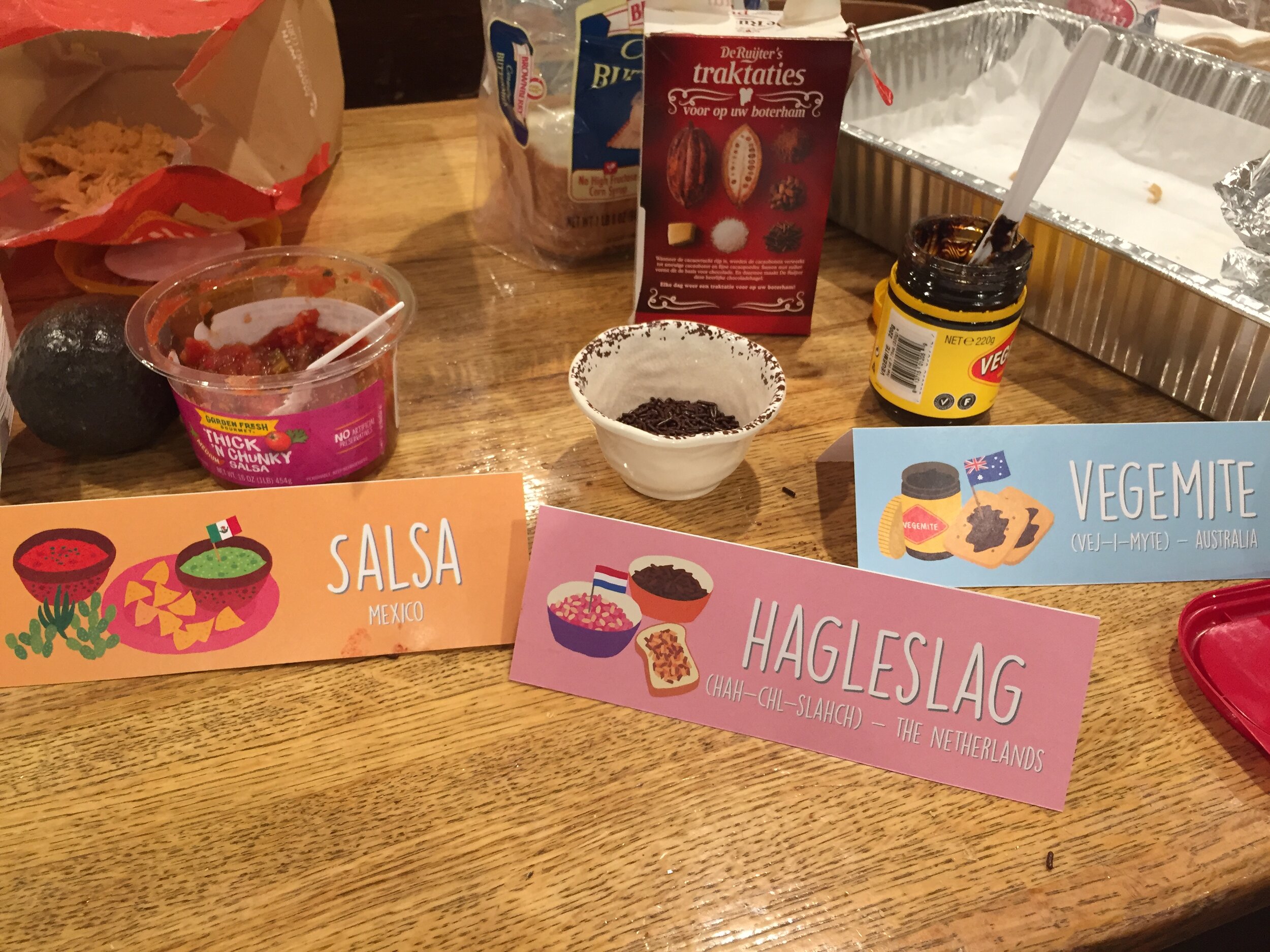

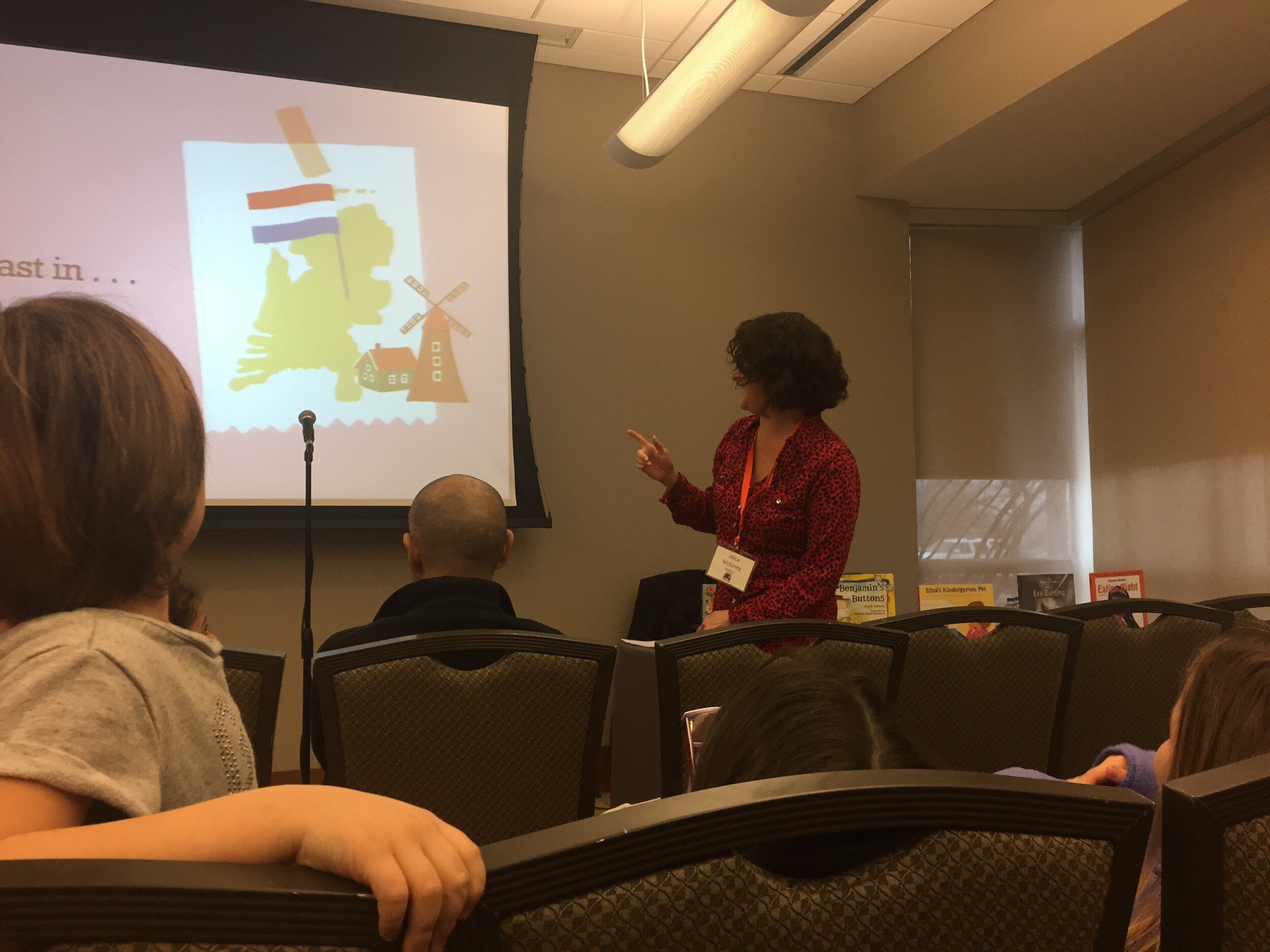
Gandhi: A March to the Sea
Honor Book, 2014 South Asia Book Award for Children's and Young Adult Literature
Starred Review, School Library Journal – May, 2013 Gr 1-4: This lyrical picture book tells the story of Gandhi’s role in the 1930 Salt March, a peaceful protest of the British-imposed taxation of salt in India. Gandhi and 78 others walked more than 200 miles to gather salt for use and sale in direct violation of a British law that they felt was unjust. The flowing text describes how the marchers faced soldiers, were encouraged by villagers along the way, and how Gandhi’s consistent and gentle confidence kept them on the right path. Stunning mixed-media artwork portrays the journey in brilliant hues with a soft touch. Gandhi’s familiar figure is included in every painting, in unique and inspiring ways; sometimes just his feet, or close-ups of his face, but most often silhouetted against the dramatic landscape of India. While this book shares only a small part of Gandhi’s legacy, it is a key moment in India’s fight for independence, an excellent example of his life and work, and an intriguing introduction to the man. Demi’s Gandhi (S & S, 2001) may provide more detail and a broader scope, but this gorgeous, thoughtful account should be in every biography collection.–Jody Kopple, Shady Hill School, Cambridge, MA.
Publisher’s Weekly Review, April, 2013: McGinty crafts a subtle yet expansive portrait of Mohandas Gandhi, centering on his leadership during a 24-day march to perform the forbidden act of taking salt from the Arabian Sea (a response to the British government’s control of resources). Melodic free verse ruminates on the symbolism behind Gandhi’s actions: “With his own hands,/ Gandhi draws water,/ from the Untouchables’ well,/ to wash his dusty body/ cool and clean…. He tells Muslims, Hindus, and Untouchables/ that they are different but the same./ India needs them all/ to work as one/ for freedom.” The great majority of Gonzalez’s lavish paintings emphasize modesty and quiet integrity: Gandhi walks the dry earth, barefoot and in solidarity with India’s poor. A striking profile of a luminous human rights activist. Ages 6–up. (Apr.)
Kirkus Reviews, March, 2013: McGinty’s gentle, poetic picture book, awash with sunrises, salt, sand and sensory images, tells an intense present-tense story of Mohandas Gandhi’s 24-day march to the sea in 1930 in search of freedom and peaceful change for the people of India. The bespectacled, contemplative face of Gandhi that appears on the front cover of the book sets the mood for the story, emphasizing his determination. His goal is to challenge 200 years of British rule by breaking the law prohibiting Indians from collecting salt from the sea. His march changes more than just the attitudes of the British. Gandhi sometimes walks alone and at other times leads throngs of people from a variety of castes. When he reaches out to the untouchables and even washes in their well water, “[d]isgust and fear / brew like storms / in the villagers’ watching eyes.” Remaining undeterred and true to his faith, Gandhi marches on. Gonzalez’s rich mixed-media illustrations shift perspectives often to focus on the important elements in each scene: Bare feet and dirty white trousers hint at the difficulty of the journey; faceless crowds that melt into the horizon suggest the size of Gandhi’s following. An imperfect marriage of text and illustrations sometimes creates confusion more than clarity, as when elaborately dressed female dancers suddenly appear on the road with the walkers. Despite this, the book tells a story worth remembering. This walk with Gandhi is time well-spent. (Picture book. 6-12) __________ “This re-telling of a fascinating story introduces today’s American children to a remarkable man who freed India and influenced the whole world, the United States included.” —Rajmohan Gandhi, professor at the University of Illinois and a grandson of Mahatma Gandhi.
Rabbi Benjamin's Buttons
P.J. Library Selection
2015 Sydney Taylor Notable Book
Starred Review - Publisher's Weekly
Rabbi Benjamin and his congregation are besotted with one another, but when the community presents its leader with a yellow-gold vest to wear on holidays, decorated with four shiny silver buttons, they neglect to factor in one thing: Jewish holidays mean lots of irresistible, calorie- and emotion-laden Jewish cooking. As the rabbi grows increasingly portly at various dinners, it’s clear to both him and his attentive dog that the vest and its silver buttons are not engineered to expand. Oy-yoy-yoy! You don’t have to be Jewish to love this marvelously funny, wholly original story about the intersection of faith, food, and families—in fact, it’s got a wrap-up that Michelle Obama would applaud: Rabbi Benjamin discovers that a regimen of community-centered exercise (like helping one family plant a Sukkot garden) can work wonders. McGinty’s (Gandhi: A March to the Sea) loving, lighthearted prose is as sunshiny as her characters, while Reinhardt’s (The Adventures of a South Pole Pig) detailed watercolors depict a diverse congregation brimming with endearing idiosyncrasies and mutual affection—a real mishpochah. Ages 4–8. Illustrator’s agent: Marietta B. Zacker, Nancy Gallt Literary Agency. (Aug.)
Darwin
2010 Orbis Pictus Honor Book
Kirkus Review: ”An accessible and thoroughly engaging biography of the much-profiled scientist, this easy-to-follow narrative is enriched by striking illustrations and excerpts from Darwin’s own writings. Exquisite and enlightening.”
Booklist Review: ”McGinty does a fine job of communicating Darwin’s personal humility as well as his passion for exploring the natural world, his tireless work to understand it better, and his reluctance to publish a theory that seemed to contradict religious teaching. The interplay of the clearly written third-person text with Darwin’s own words and occasional quotes from his contemporaries creates a multifaceted view that leads to a broader understanding. Biographies of scientists can be challenging to write for an audience unfamiliar with their research, but this one succeeds in introducing Darwin and his work to a surprisingly young group.” - Carolyn Phelan
Wired Magazine Review: ”Though aimed at the young evolutionary (ages 6 to 9), Darwin is a surprisingly sophisticated biography, incorporating verbatim excerpts from the naturalist’s own letters and diaries.”(January 2009)
